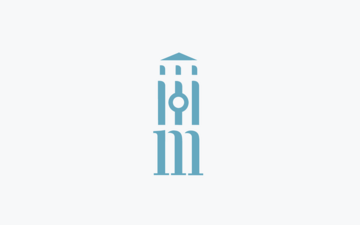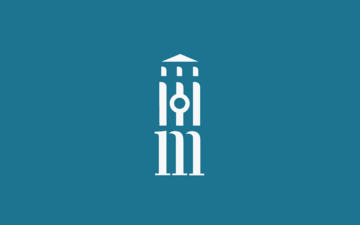From the Vault: Spinal Tapping Press Material Culture

Our “From the Vault” posts allow you to take a peek into the history of the Press, where you can rediscover past authors, projects, editors, awards, and more that led to the development of the university publisher that the Press is today. This window into our past spotlights backlist or out-of-print titles and series and also recommends and contextualizes them with similar current and forthcoming titles. Explore the drawers of the Vault with our intern, Mikala Carpenter, as we uncover the hidden treasures that await us in the archives of the University of Michigan Press.
If you spend enough time among the shelves, boxes, and piles of books that are scattered across most of the available surfaces at the University of Michigan Press, you will notice that there are two types of books brushing shoulders — or spines, rather — with other books. The defining characteristic that makes the books stand apart may not be obvious at first, especially since it’s in the nature of a book to be unique. Interestingly, however, this difference allows those who know what they are looking for to group the books into two chronological categories.
As you peruse the spines of dozens of Press titles, you might begin to notice a pattern. There are two symbols that appear multiple times on the books’ spines, in various sizes and colors. The first symbol is of a boxed-in cursive “m,” often with the word “Michigan” appearing directly under it. Earlier versions of this symbol only included the scripted letter “m.” The second symbol is a simplified graphic of the University’s Burton Memorial Clock Tower that incorporates the letter “m” at its base.
These two Press logos appear on many other pieces of Press material culture as well, including official forms and letterheads. Though these symbols are more often seen today, they are not the only spine logos to appear on Press titles. When the University officially established the Press in 1930, book spines had an unembellished logo that read, in all capitals, “The University of Michigan Press.” Letterheads were similarly straightforward until a transition period began to set in circa the late 1970s. At about this time, the articulate, cursive “m” logo, which was already visible on book spines in the late ‘50s and early ‘60s, finally became the Press’ representative symbol on its letterhead as well.
The use of the scripted “m” persisted in the Press’s material culture for another thirty years until the clock tower logo began to predominate in 2004. Interestingly, letterheads from Jan. 2004 show that the cursive “m” symbol had yet to disappear, but book spines from later in the year show that the Press’s logo had undergone complete transition. Now, the letterhead is a minimalist representation of the clock tower logo and, in simple, clear letters at the top, the words, “The University of Michigan Press.”
Because of the Press’s logo evolution over time, it is possible to give an approximate time range for each book with specific spine art. Books with the script “m” logo were generally printed between 1950 and 2004, while books with the clock tower logo were printed from 2004 to the present.
Other interesting logos that often appear on Press titles include those of the Ann Arbor Paperbacks series, from the 1960s and 1970s, and the Digital Culture Books series, the collaborative imprint initiative between the Press and MLibrary that began in 2006.


